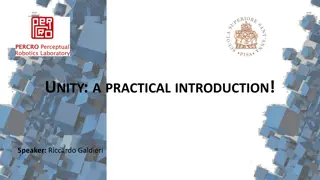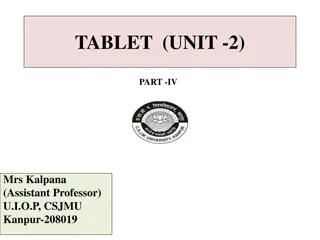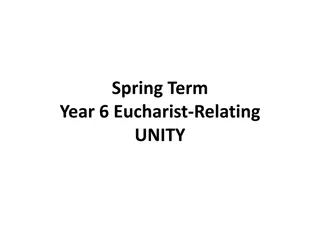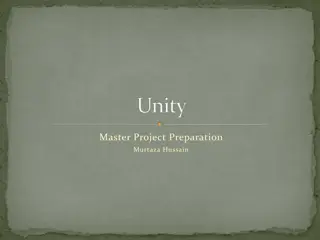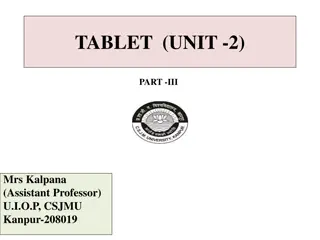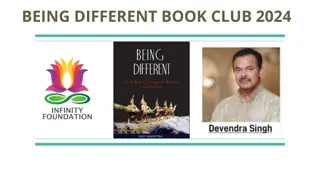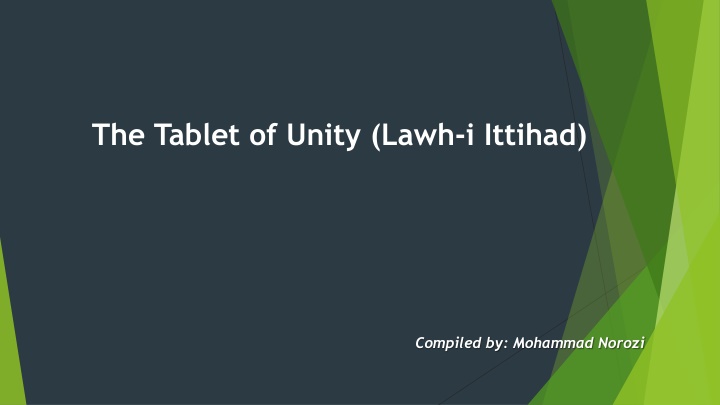
The Tablet of Unity by Bahá'u'lláh
Discover the profound teachings of Bahá'u'lláh's Tablet of Unity, where he explores six types of unity including religion, words, ritual acts, and rank or station. Gain insights into the importance of unity in various aspects of life and how it can lead to the triumph of the cause of God.
Uploaded on | 0 Views
Download Presentation

Please find below an Image/Link to download the presentation.
The content on the website is provided AS IS for your information and personal use only. It may not be sold, licensed, or shared on other websites without obtaining consent from the author. If you encounter any issues during the download, it is possible that the publisher has removed the file from their server.
You are allowed to download the files provided on this website for personal or commercial use, subject to the condition that they are used lawfully. All files are the property of their respective owners.
The content on the website is provided AS IS for your information and personal use only. It may not be sold, licensed, or shared on other websites without obtaining consent from the author.
E N D
Presentation Transcript
The Tablet of Unity (Lawh-i Ittihad) Compiled by: Mohammad Norozi
The Tablet of Unity is a Tablet of Bahullh dealing with the subject of unity and describing various types of unity that may be attained. It is usually considered that this Tablet belongs to the Akka period.(1)The Tablet is stated to have been addressed to Sayyid Asadu llah of Rasht, the fourth of five brothers known as Sadat-i Khams. The five brothers were merchants and had obtained Russian protection. When Sayyid Asadu'llah returned to Rasht, he was able, together with one of his brothers, to negotiate a contract with the holder of the Imperial concession for the surfaced road between Anzali and Tehran for the provision of traveller's services along the route - rest-houses, food, accommodation, etc. As a result of this he became very rich.(2) In this short presentation the actual tablet will not be presented nor discussed in detail. Rather, a brief overview will be given. The idea is to introduce types of unity that Bah u ll h had in Mind and use them in our daily encounters with others.
In this Tablet, Bah'u'llh deals with 6 types of unity: 1. Unity of Religion. Bah 'u'll h says that when the believers are united, this leads to the victory of the cause of God. Furthermore, he asserts that if all of the people in a country are united in religion, the government of that country need interfere very little in the social affairs of that country.
2. Unity of Words. Bah 'u'll h appears to require that the Bah ' s be united in their public position. In other words that they should be one in the message that they give. He states that what is said should be with wisdom and gives the example that He also uses in the Lawh-i Maqsud of giving milk to babes. But ultimately, Bah 'u'll h asserts that in this dispensation, it is deeds rather than words that will bring triumph to the Cause of God.
3. Unity of Ritual Acts. Although it is tempting and possible to translate this as oneness of deeds or actions, it would appear, from the examples that he gives, that Bah 'u'll h has the specific meaning of ritual acts in mind when He writes of ittihad-i a`mal. He states that in Islam, different ways of doing the rituals, such as the obligatory prayer, have led to differences arising among the believers and ultimately to disunity.
4. Unity of Rank or Station. By this Bah 'u'll h means that the Bah ' s should regard themselves as all equal in rank. He states that it is the fact that some have regarded themselves superior to others that has led to the weakening and downfall of other religion. In particular, he condemns the religious leaders.
5. Unity of Wealth and 6. Unity of Souls. Bah 'u'll h considers these two unities together. He says that the mere sharing of what one has is not sufficient, one should prefer others over oneself. This is the way towards that unity of souls which is the ultimate aim. A situation which Bah 'u'll h characterises as being one where all should gather around and cling to the Love of God and the Word of God. Notes: 1. Taherzadeh, Revelation of Bah 'u'll h, vol. 4, p. 191 2. Taherzadeh, Revelation of Bah 'u'll h, vol. 4, p. 191. Mazandarani, Zuhur al-Haqq, vol. 6, p. 941 Materials presented in this presentation are extracted from a paper by Mojan Momen.








